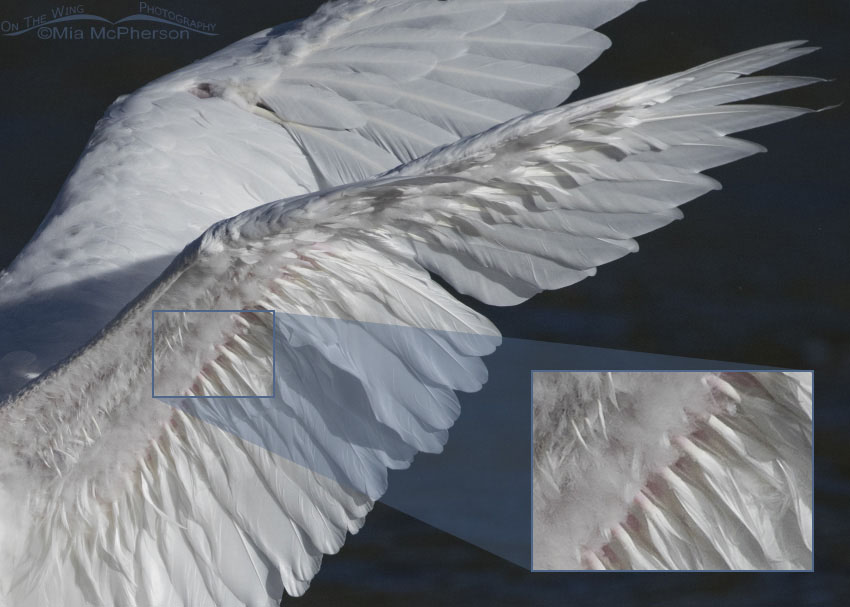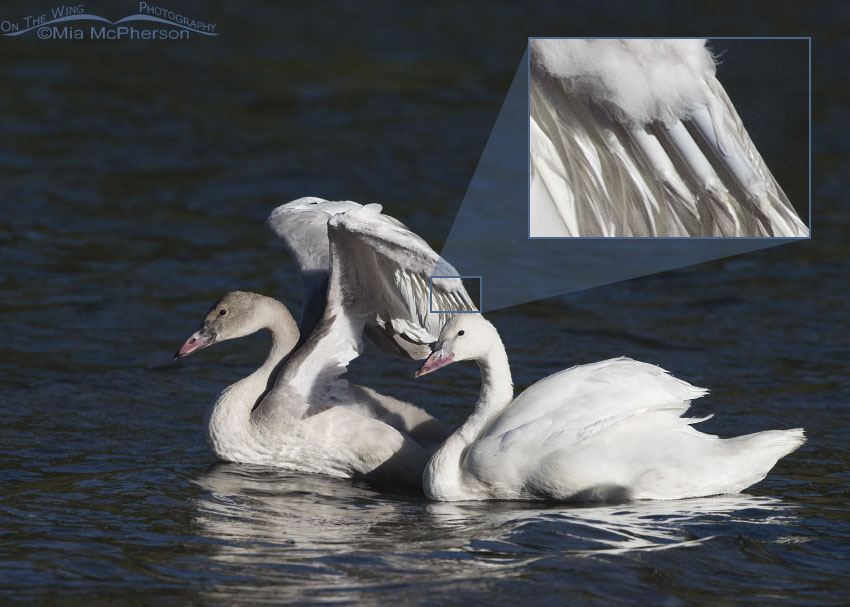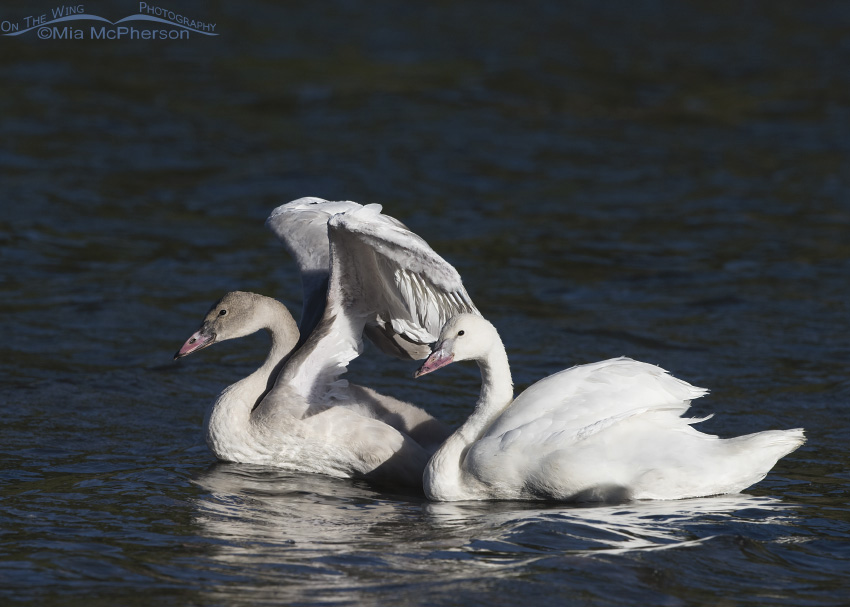In my last post on the Trumpeter Swan Cygnets On Elk Lake I mentioned that the cygnets spent a lot of time preening and part of the reason they do is they are molting. During their molt pin feathers; some times called blood feathers, develop to produce the new feathers that are coming in.
 Inset showing pin feathers on a Trumpeter Swan Cygnet
Inset showing pin feathers on a Trumpeter Swan Cygnet
Unlike fully developed feathers pin feathers do have a blood supply and can bleed. In the inset you can see some of the pink of the blood supply in the newly developing feathers of the under side of the wing of this cygnet.
 Inset showing primary pin feathers on a Trumpeter Swan Cygnet
Inset showing primary pin feathers on a Trumpeter Swan Cygnet
Each of these newly developing pin feathers have a shaft that is a waxy coating that protects the developing feather. The inset above shows those sheaths on the cygnet’s primary or flight feathers. Birds will spend a lot of time preening during molt which will ultimately remove the sheaths waxy coating and those new feathers will unfurl. When the feather is fully developed the blood supply dries up. During molt some species of waterfowl are flightless.
 Trumpeter Swan cygnets in late afternoon light
Trumpeter Swan cygnets in late afternoon light
I had also remarked in my previous post that some of the cygnets were whiter and some were gray and what I didn’t realize when I wrote that post is that there can be leucistic cygnets in a brood and that there plumage more closely resembles the Definitive Basic Plumage of adult birds except for the bare parts of the bill and face. That may or may not account for why there were two very white juveniles while the rest still looked gray.
I’m still learning about birds.
Life is good.
Mia
Click here to see more of my Trumpeter Swan photos plus facts and information about this species.


Really enjoyed this post. Thanks for all your time and effort. Yes, learning never ends!
Wonderful information and pictures. Thanks for sharing so we can all learn.
Fascinating. Thank you.
Interesting to see so close up.
A very interesting series and comments…knew none of this before! Especially interesting was the detail inset, showing the structure and base of these new feathers. Thanks for the education….
Exceptionally good photos and info. Please accept our thanks for your posts.